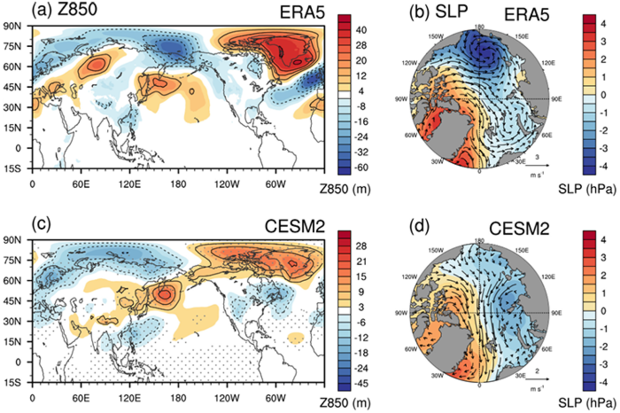Decline in Arctic sea ice driven by patterns in the tropics

The newly published study links record-low 2012 Arctic sea ice to ENSO conditions. Credit: doi:10.1029/2022GL098385

The newly published study links record-low 2012 Arctic sea ice to ENSO conditions. Credit: doi:10.1029/2022GL098385
Recent decades have shown a decline in Arctic summer sea ice cover, with the lowest sea ice extent recorded in 2012. A new study, funded in part by CPO’s Modeling, Analysis, Predictions, and Projections (MAPP) program, provides evidence that tropical sea surface temperature patterns had a strong influence on the 2012 sea ice anomaly. Researchers from Hanyang University and the University of Hawai’I at Mānoa used the Community Earth System Model version 2 (CESM2) to produce simulations of the connected atmosphere, ocean, and sea ice systems. The model results demonstrate two distinct tropical drivers for the reduction in sea ice. Relatively cool conditions in the tropics in 2010 and 2011 increased atmospheric temperatures in the Arctic, whereas warm tropical sea surface temperatures paired with cooling in the North Pacific in 2012 strengthened a high pressure zone and sea ice movement across the Arctic. The model highlights the key roles of both of these factors in driving the 2012 record low Arctic summer sea ice extent.
Read more at the link below.